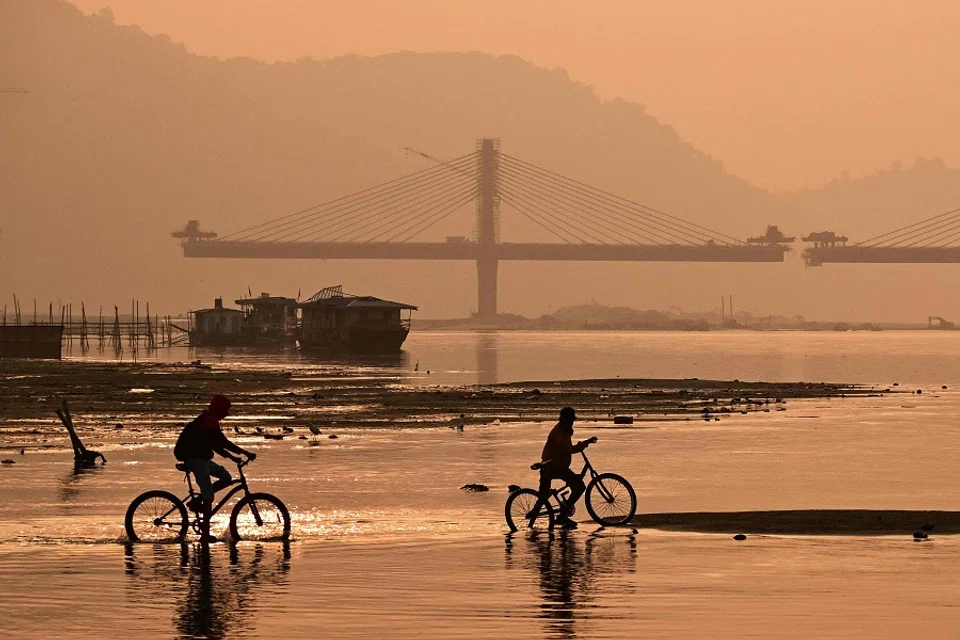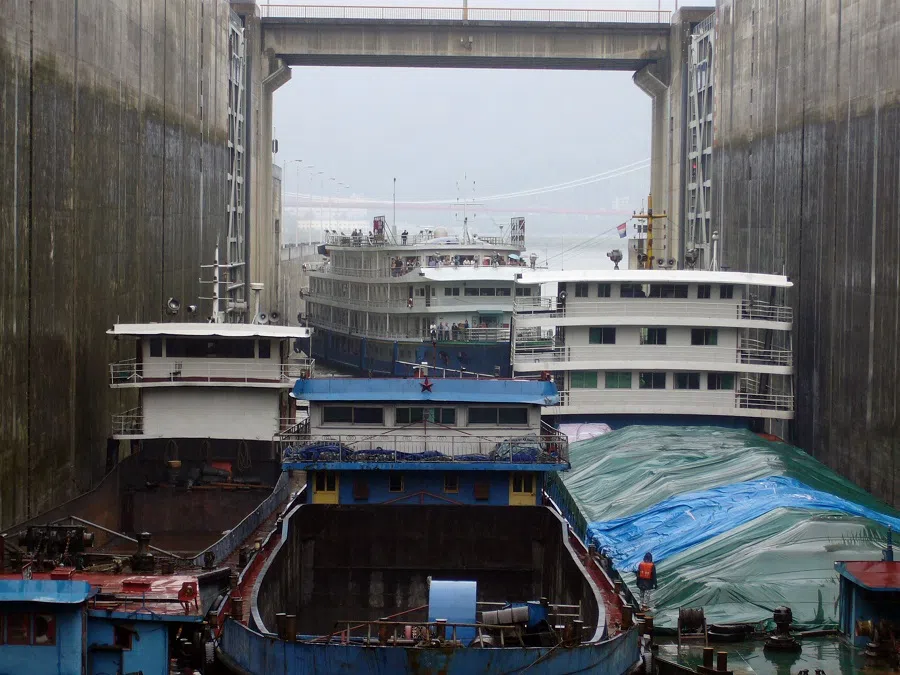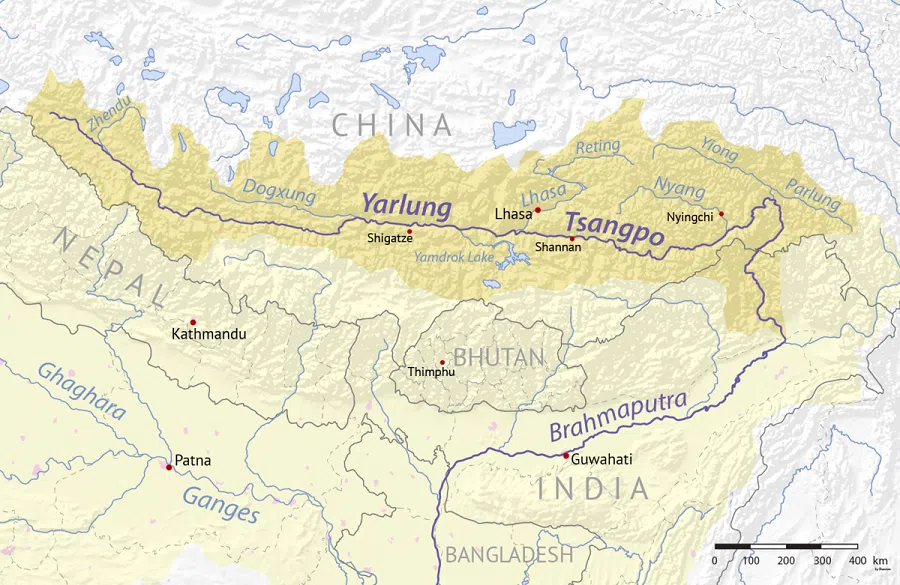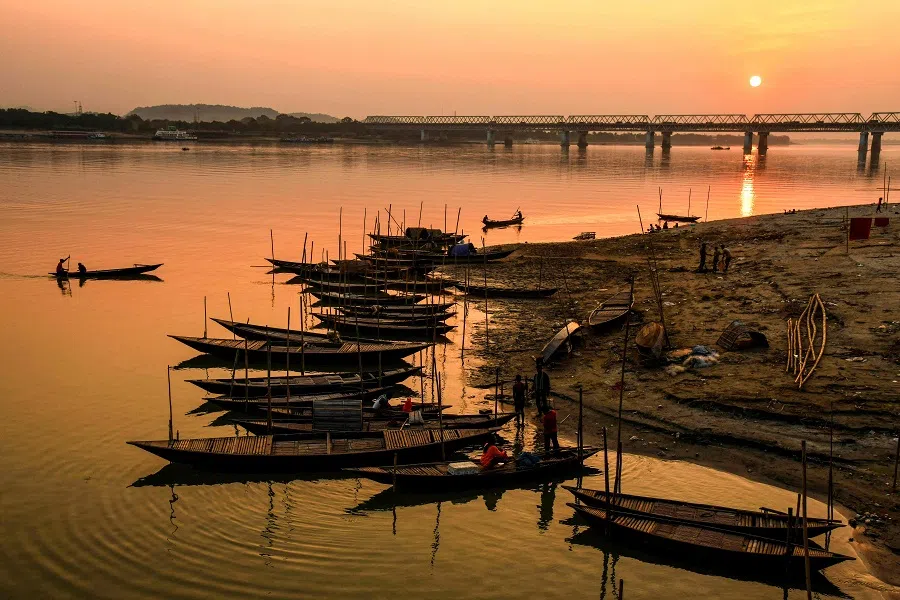China’s new mega-dam project draws concerns
China recently announced the construction of a new mega-hydropower-dam that will be situated in Tibet. However, the construction of a dam of this scale has prompted concerns about its impact and potential fallout. Researchers Amit Ranjan and Genevieve Donnellon-May discuss and evaluate the geopolitical, economic and environmental implications of the new dam.

On 25 December 2024, China officially approved the construction of the world’s largest hydropower dam — a 60-gigawatt “super dam” located on the lower reaches of the Yarlung Zangbo River (upper Brahmaputra) in Tibet Autonomous Region. The US$137 billion project, first made public in November 2020, is expected to cost more than the Three Gorges Dam, which originally cost 254.2 billion RMB (US$18.73 billion) and displaced 1.4 million people. As reported, the gigantic dam could produce 300 billion kilowatt-hours of electricity annually on completion, which is more than three times the amount generated by Three Gorges Dam in central China.
Although the project’s precise location remains unclear, reports suggest it will be built near the “Great Bend” in Tibet close to the China-India border. Here, the river plunges 2,000 metres over a short distance of 50 kilometres, curling down towards India before flowing to Bangladesh. The idea is to build a hydropower dam that harnesses the river’s energy as it cascades rapidly down the bend.

This Chinese project has raised considerable concerns in India because it will be located on the transboundary river.
Yarlung Zangbo begins on China’s Qinghai-Tibet Plateau. After a journey inside Tibet, the river enters the Indian state of Arunachal Pradesh, where it is known as Siang. After Arunachal Pradesh, the river flows into the plains of Assam, where locals call it Brahmaputra. From India, it crosses into Bangladesh, where it is called the Jamuna River, before emptying into the Bay of Bengal.
As China shifts away from coal — which supplies nearly 70% of its energy use — to clean energy sources like hydroelectricity, more dams are expected to be built.
Why China needs this dam: domestic drivers
While the idea of exploiting the hydropower potential at the Great Bend — and the lower reaches of the Yarlung Zangbo River in Tibet — has been floating around for many years, the 60-GW hydropower dam was included in the 14th Five-Year Plan (2021-2025). This is largely due to the Chinese central government’s ongoing push toward carbon emission reduction.

After Chinese President Xi Jinping’s bold statement that China would reach peak carbon emissions by 2030 and also achieve carbon neutrality before 2060, reducing carbon emissions and transitioning to clean energy emerged as clear central policy priorities in the Plan. Notably, the Plan set out an 18% reduction target for CO2 intensity and a 13.5% reduction target for energy intensity (emissions per unit of GDP) by 2025. As China shifts away from coal — which supplies nearly 70% of its energy use — to clean energy sources like hydroelectricity, more dams are expected to be built.
Due to massive investments in hydropower over the past few decades, hydropower potential has already been exploited in much of China — except for Tibet. At present, the country’s hydropower resources total over 676 million kilowatts, the largest in the world. Tibet accounts for around 30% of this amount.
Despite this vast potential, many of Tibet’s resources remain undeveloped, with installed capacity at only 1% of the region’s technically exploitable potential.
Environmental implications of the new hydropower dam
What are the implications of the new hydropower dam? Three critical aspects should be considered.
The construction of the dam and its long-term operation may also significantly impact the local environment and ecology, including surrounding biodiversity and the river ecosystem.
Firstly, it is important to consider the location of the planned gigantic hydropower dam. The dam will be located in a high seismic zone, raising concerns about the potential for catastrophic events. Even minor accidents in such an area could have devastating consequences, not only for Tibet but also for downstream regions in India.
The construction of the dam and its long-term operation may also significantly impact the local environment and ecology, including surrounding biodiversity and the river ecosystem. These environmental risks need careful consideration, especially given the fragility of the Himalayan ecosystem.
Social implications
Secondly, the displacement of local populations should be noted. Large dam projects are often associated with the displacement of local communities, sometimes without adequate compensation. Due to such impacts, the construction of many big dams faces protests by the local population or people living near the project. Tibetan communities, in particular, have resisted such projects in the past.
Notably, Tibetan residents of Kamtok in the remote mountainous border area between Tibet and Sichuan province held a rare protest in February last year, against the construction of the Gangtuo dam, which is part of China’s larger national hydropower plans. The protests highlight China’s controversial push to build dams in what has long been a sensitive area. While no protests have yet been reported regarding the new mega-dam, there is potential for similar unrest, particularly if affected communities are excluded from the decision-making process.

A factor that may win over local communities in southwest China is the expected economic benefits the project will bring to the local area. Recent reports from Chinese state media emphasise that the dam could significantly boost local livelihoods. According to Xinhua, the hydropower project is expected to stimulate key industries such as engineering, construction, and logistics, while also creating employment opportunities. Additionally, the project may enhance economic ties between Tibet and other regions of China.
However, these benefits may be unevenly distributed, potentially exacerbating social tensions and perceptions of inequality, particularly among displaced populations.
Given the size and scope of the hydropower dam and its location near the Sino-Indian border, New Delhi has expressed significant concerns over the dam’s impact on India.
Geopolitical implications
Thirdly, the potential for disruptions to the downstream region — India and Bangladesh — must be acknowledged. Given the size and scope of the hydropower dam and its location near the Sino-Indian border, New Delhi has expressed significant concerns over the dam’s impact on India.
In early January this year, the Indian government voiced its unease through diplomatic channels, emphasising the risks posed to downstream water availability. India’s Ministry of External Affairs (MEA) spokesperson, Randhir Jaiswal, also stated in early January that India had raised these concerns with China, emphasising the country’s established rights to the river’s water.
Other potential challenges
One of the challenges surrounding China’s hydropower project is that Beijing has not yet released hydrological data about the project, either to countries located downstream or to the public. Despite this, the Chinese foreign ministry pledged in late December 2024 to maintain dialogue with downstream nations and step up cooperation on disaster prevention.
Another major challenge is the lack of robust bilateral mechanisms for managing transboundary river governance.
India depends on Tibet for around one-third of its water supply, and the hydropower project could affect water flow into the Indian state of Arunachal Pradesh. However, it is unlikely to impact the region where the Brahmaputra flows significantly. Research indicates that while 50% of the Brahmaputra River basin lies within China, it accounts for only 7 to 30% of the total basin discharge. The United Nations Food and Agriculture Organisation (FAO) estimates China’s contribution to Brahmaputra flow at 30%, while other sources suggest it could be as low as 7%. These varying figures illustrate differing views on China’s role in the river’s flow. Given that the Indian portion of the basin experiences some of the highest rainfall in the world, the downstream impact may be less significant than anticipated.
According to Chinese officials, the hydropower dam will be a “run-of-the-river” project, meaning the water will be diverted to generate electricity before being redirected back to the river.
Another major challenge is the lack of robust bilateral mechanisms for managing transboundary river governance. This is especially important due to the increasing securitisation of water — an issue that has become deeply intertwined with the political and military dynamics between India and China. In the case of India and China, it is worth noting that after a five-year hiatus, Chinese President Xi Jinping and Indian Prime Minister Narendra Modi met in 2024 on the sidelines of the BRICS summit in Kazan, Russia.

Can diplomacy mimimise potential fallout?
Adding to the complexity of Sino-Indian river governance, India and China have previously signed two memoranda of understanding (MOU) for data sharing to manage transboundary rivers. However, these agreements have expired. For instance, the MOU on the Sutlej River, which expired in 2020, is currently in the process of renewal through diplomatic channels. Nonetheless, China provided monsoon data for the Sutlej River during the 2021 flood season. Similarly, the hydrological data-sharing agreement for the Brahmaputra River expired in 2023 and has yet to be renewed. With changed political ties, the two MOUs are likely to be renewed soon.
There is also an Expert Level Mechanism (ELM) that convenes regularly to address water-sharing issues. However, the effectiveness of both the ELM and the MoUs depends significantly on broader political relations between India and China, which influence their ability to resolve water-related matters effectively
Many large dam projects worldwide have generated conflict between developers and local populations due to the displacement of communities and environmental risks. China’s plan to construct a massive dam in Tibet is no different as it raises concerns about ecological damage, potential displacement, and dangers posed by its location in a high seismic zone.
The dam’s construction also has political implications for lower riparian countries, particularly India. While China has emphasised that the project will not harm the interests of downstream countries, India has its concerns. Existing dialogue platforms like the ELM offer a constructive path forward, but the future of water-sharing relations between the two countries will ultimately depend on the political will to cooperate and resolve these issues through diplomatic engagements.




![[Big read] China’s 10 trillion RMB debt clean-up falls short](https://cassette.sphdigital.com.sg/image/thinkchina/d08cfc72b13782693c25f2fcbf886fa7673723efca260881e7086211b082e66c)

